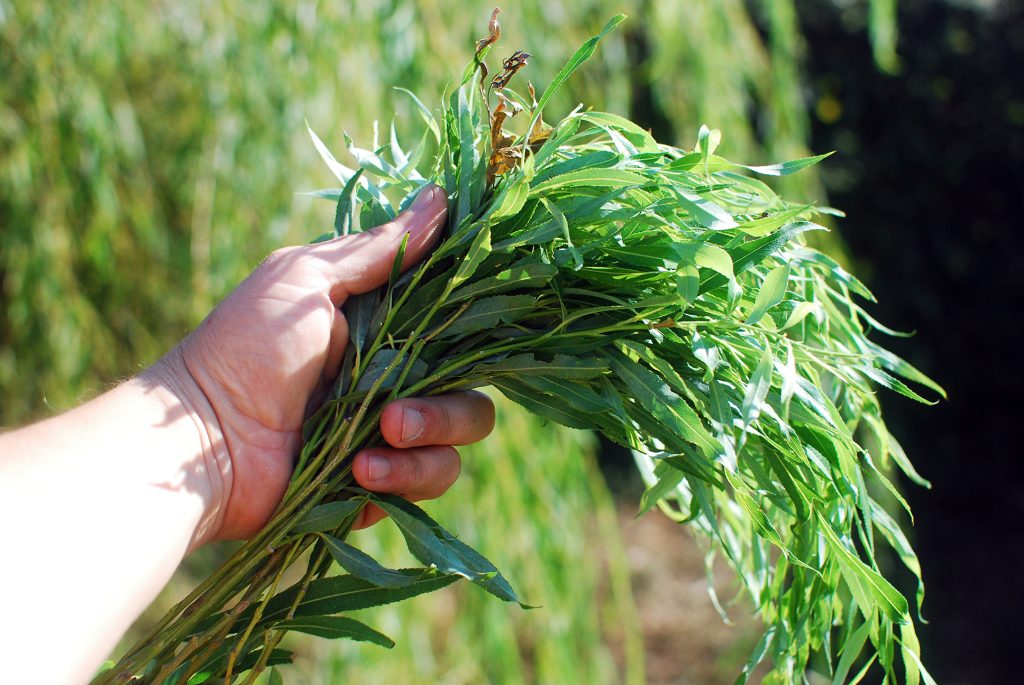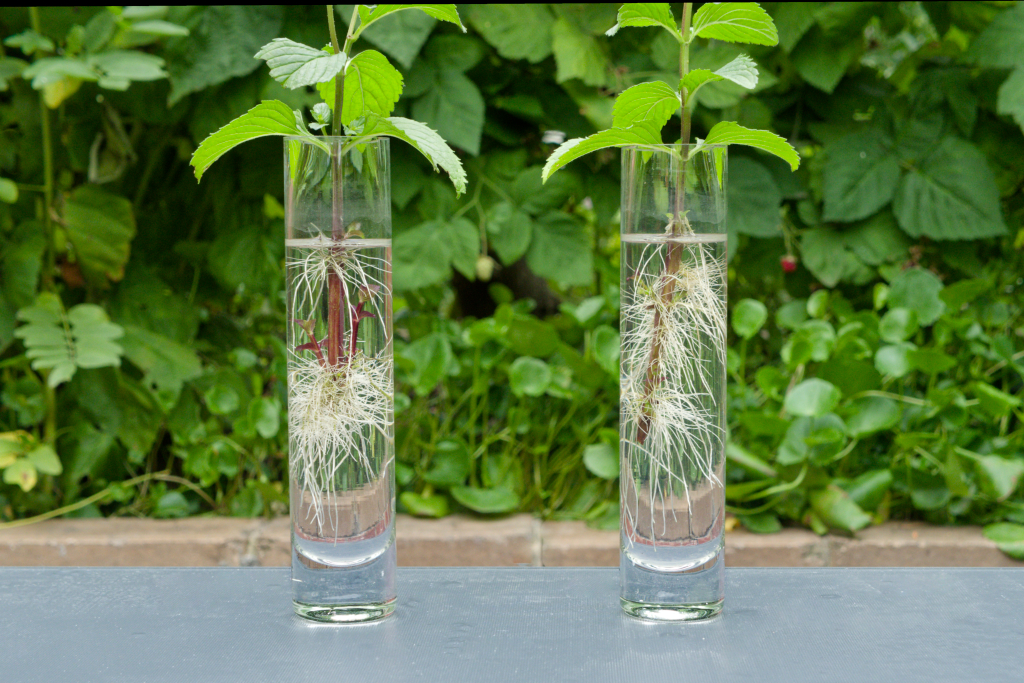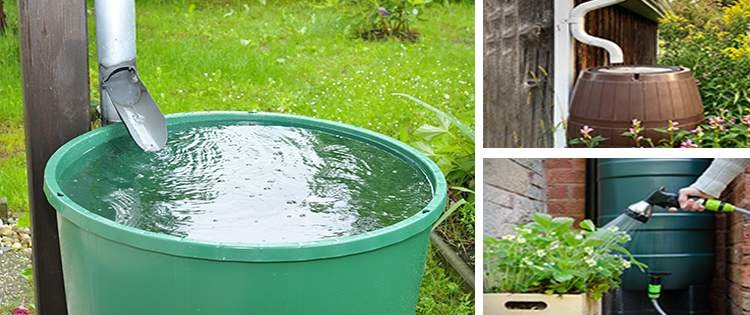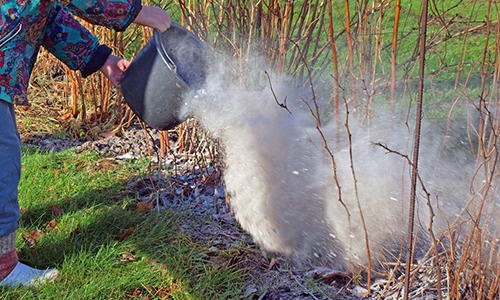Introduction
Willow Water: A Natural Elixir for Thriving Gardens.
Gardening is not just a hobby; it’s a labor of love, an art form, and a connection to nature. Home gardeners, both seasoned and beginners, constantly seek ways to foster healthier, more robust plants. Willow water, a simple yet remarkable concoction, it has earned its place as a hidden gem in the world of gardening.
In this comprehensive guide, we will explore the wonders of willow water, revealing the science behind its magic, its myriad benefits, and providing you with a step-by-step roadmap to successfully make and utilize it in your garden.
The Mystery of Willow Water
Before we dive into the details of what willow water is and how to use it, let’s unravel the mystery that makes it so intriguing. At its core, willow water is a natural rooting hormone, and its secret weapon is a compound known as salicylic acid.
Salicylic Acid: This unassuming compound, naturally occurring in willow trees (genus Salix), is a plant hormone that plays a pivotal role in growth and development. It acts as a signal, mobilizing the plant’s defenses against pathogens and environmental stress. Salicylic acid is akin to a plant’s immune system, and it’s known for its anti-inflammatory properties.
In the realm of gardening, salicylic acid takes on a different role – it promotes root growth in plant cuttings. When used correctly, it encourages the formation of roots, setting the stage for a healthy, self-sustaining plant. This is where the magic of willow water begins.
The Significance for Home Gardeners
As a home gardener, you’re likely familiar with the excitement and anticipation that come with propagating plants. Whether it’s expanding your collection of beautiful flowers, growing your own fruits and vegetables, or nurturing houseplants, the ability to propagate and grow plants from cuttings opens up a world of possibilities. Willow water is a tool that can greatly enhance your success in this endeavor.
Why is willow water significant for home gardeners?
- Enhanced Propagation: It can significantly increase the success rate of propagating cuttings, allowing you to create new plants from your existing favorites or share them with friends and family.
- Cost-Efficiency: Willow water provides an organic, cost-effective alternative to synthetic rooting hormones that can be pricy and may not align with your desire for natural, chemical-free gardening.
- Improved Plant Health: Beyond propagation, the use of willow water can promote overall plant health by stimulating root development in established plants, making them more resilient and adaptable.
The Journey Ahead
In the upcoming sections of this guide, we will embark on a journey to unlock the full potential of willow water. We will delve into the science behind its root-boosting properties, explore its various benefits, and guide you through the process of preparing and using willow water in your garden. By the end of this guide, you will have the knowledge and confidence to harness the power of willow water for a thriving garden.
Gardening is a voyage of discovery, and willow water is your trusted companion on this horticultural journey. So, let’s roll up our sleeves, dig into the rich soil of knowledge, and nurture our gardens with the ancient wisdom of willow water.
In the next section, we will explore the Science Behind Willow Water, unraveling the mysteries of salicylic acid and its role in plant growth.
The Science Behind Willow Water
In this section, we will delve into the scientific underpinnings of willow water, shedding light on the role of salicylic acid in plant growth and development. Understanding the science behind willow water will not only deepen your appreciation for its effectiveness but also empower you as a knowledgeable gardener.
Salicylic Acid: Nature’s Growth Hormone
At the heart of the willow water’s efficacy lies a humble yet powerful compound: salicylic acid. This natural plant hormone is the key to the root-boosting properties of willow water.
The Role of Salicylic Acid in Plants:
Salicylic acid is a versatile signaling molecule in plants. Its primary role is to orchestrate the plant’s response to stress and pathogens. When a plant is under attack or facing adverse environmental conditions, it deploys salicylic acid as a defense mechanism. It triggers a cascade of responses, including the production of antioxidants and other compounds that help the plant resist the stressor.
Rooting Hormone Properties:
In the context of willow water, salicylic acid’s ability to stimulate root growth is what makes it truly remarkable. When plant cuttings come into contact with this natural rooting hormone, it’s as if a green light flashes, signaling the cells at the base of the cutting to start forming roots. This means that your cuttings are more likely to take root, establish themselves, and eventually thrive as independent plants.
The Magic of Rooting Hormones
The concept of rooting hormones, whether natural like salicylic acid or synthetic, is a fascinating one in the world of gardening. These hormones offer a helping hand in the process of asexual plant propagation. Here’s how it works:
- Cell Division: Plant cuttings, taken from stems or leaves, initially consist of cells that are specialized for growth and not root formation. Rooting hormones like salicylic acid trigger these cells to undergo division and differentiation, transforming into root cells.
- Root Development: As the hormone stimulates cell division, the cutting develops a mass of root cells at its base. These cells will eventually elongate and develop into the root system of the new plant.
- Self-Sustaining Growth: Once the cutting has a robust root system, it can absorb water and nutrients from the soil, allowing it to grow independently as a new plant.
The Natural Advantage
Willow water, derived from the genus Salix, is a boon to gardeners for several reasons:
- Organic and Sustainable: Willow water is an organic, eco-friendly alternative to synthetic rooting hormones, aligning with the principles of sustainable gardening. It doesn’t introduce harmful chemicals into your garden.
- Cost-Effective: You can create willow water inexpensively by utilizing natural resources. This makes it accessible to all gardeners, regardless of their budget.
- Holistic Plant Health: Beyond its role in propagation, willow water’s use can enhance the overall health and vitality of your plants. The stimulation of root development fortifies your plants against environmental stressors and promotes better nutrient uptake.
The Power of Understanding
By grasping the science behind willow water and the function of salicylic acid, you’re equipped with knowledge that can transform your gardening practices. You’ll not only appreciate the natural wonders of the plant world but also gain the confidence to use this knowledge to your advantage.
DIY PROJECT: Collect rainwater no matter where you live...
This DIY project is the best way to legally collect rainwater NO MATTER where you live. Get chlorine-free water, cut down on your water bills, and have enough for an emergency situation or to water your garden. Read More Here...
In the next section, we’ll delve into the myriad benefits of using willow water in your garden, further illuminating its potential impact on your gardening success.
Benefits of Using Willow Water
In this section, we will explore the wide array of benefits that willow water offers to home gardeners. Understanding these advantages will help you appreciate the value of integrating this natural elixir into your gardening routine.
Enhanced Propagation Success
One of the primary benefits of using willow water is its remarkable ability to increase the success rate of propagating plants from cuttings. Whether you’re growing new plants from favorite varieties in your garden or sharing your plants with others, willow water can be a game-changer.
Key Points:
- Higher Success Rates: Plant cuttings treated with willow water are more likely to develop healthy root systems, leading to a greater success rate in establishing new plants.
- Plant Diversity: You can expand your garden’s variety by propagating unique or uncommon plants that may not be readily available in nurseries.
- Cost Savings: With a higher success rate, you’ll save money on buying new plants, pots, and other propagation materials.
Organic and Eco-Friendly Gardening
As the world embraces more sustainable and environmentally conscious practices, willow water stands out as an organic and eco-friendly option for gardeners.
Environmental Benefits:
- Reduced Chemical Dependency: Willow water eliminates the need for synthetic rooting hormones, reducing the introduction of chemicals into your garden and the surrounding ecosystem.
- Sustainable Gardening: Using natural resources like willow branches for propagation aligns with the principles of sustainable gardening and eco-conscious living.
- Safe for Beneficial Organisms: It’s safer for pollinators and other beneficial insects that play a vital role in the garden’s ecosystem.
Improved Plant Health and Resilience
Willow water is not just about propagation; it also plays a role in boosting the overall health and resilience of your plants.
Advantages for Established Plants:
- Stronger Roots: Even mature plants can benefit from a dose of willow water, as it encourages root growth and fortifies them against adverse conditions.
- Nutrient Uptake: Plants with robust root systems can better absorb water and nutrients from the soil, resulting in healthier growth and more vibrant blooms.
- Resistance to Stress: The enhanced resilience offered by willow water can help your plants withstand environmental stressors like drought, pests, and diseases.
Accessibility and Affordability
Another appealing aspect of willow water is its accessibility and affordability. Unlike some gardening products that come with a hefty price tag, willow water can be created with minimal cost.
Accessibility and Cost-Effectiveness:
- DIY at Home: You can easily prepare willow water at home using readily available materials, namely young willow branches and water.
- Budget-Friendly: This cost-effective rooting hormone alternative is accessible to gardeners of all levels and budgets.
A Natural and Holistic Approach
Using willow water embodies a holistic approach to gardening that is rooted in the principles of working in harmony with nature.
Holistic Gardening Philosophy:
- Chemical-Free Gardening: By using a natural rooting hormone, you minimize the need for synthetic chemicals in your garden.
- Sustainability: The use of willow water aligns with the principles of sustainability, promoting eco-conscious gardening practices.
- Plant-Centric Care: Willow water focuses on enhancing plant health, well-being, and longevity, reinforcing the bond between gardener and garden.
By understanding the manifold benefits of willow water, you can make informed choices about how to incorporate it into your gardening routine. In the next section, we’ll provide a step-by-step guide on how to prepare willow water, empowering you to harness its potential.
Preparing Willow Water
In this section, we will guide you through the process of preparing your own willow water. With a few simple steps and the right materials, you can create this natural elixir to elevate your gardening endeavors.
Materials You’ll Need
Before we get started, gather the essential materials required for making willow water:
- Young Willow Branches: Fresh growth, typically from early spring, is ideal. You’ll want to collect enough to fill a container.
- Container: Use a clean, non-metallic container, such as a bucket or a large glass jar, to steep the willow branches.
- Water: Choose chlorine-free water, like rainwater or dechlorinated tap water, as chlorine can interfere with the rooting process.

Steps to Prepare Willow Water
Now, let’s walk through the process of creating willow water step by step:
Step 1: Gather Willow Branches
Do you have some charcoal in your house right now? We call charcoal a “miracle leftover” for anyone who wants to be a little more self-sufficient and cut costs. That’s because it can help you with so many different things around the house and garden. You can even use it to make an energy-free fridge. Read More Here...
- In early spring, identify young, flexible branches on your willow tree. These are usually the topmost or most recent growth.
- Using clean pruning shears, snip the branches into pieces that are around 1 to 2 inches in length. This will help release the beneficial compounds.
Step 2: Place the Willow Cuttings in a Container
- Fill your chosen container with the freshly cut willow branches. You can pack them in fairly densely; they will release their compounds into the water.
Step 3: Add Water
- Pour your chlorine-free water over the willow branches until they are fully submerged. The water should cover the plant material entirely.
Step 4: Cover and Steep
- Cover the container with a lid or plastic wrap to keep out debris and bugs. Let the mixture steep for a few days, typically around 3 to 7 days, at room temperature.
Step 5: Strain and Store
- After the steeping period, strain the liquid into another clean container. Discard the plant material.
- Store your freshly prepared willow water in a cool, dark place. It’s best to use it within a few weeks to ensure its effectiveness.
Variations and Tips
While the basic process outlined above is the traditional method for making willow water, there are a few variations and tips to consider:
- Concentration: You can experiment with the concentration of willow branches to water. Some gardeners prefer a more concentrated solution for faster results, while others use a more dilute mixture for gentler rooting.
- Temperature: Warmer temperatures tend to extract compounds from the willow material more quickly. If you’re in a hurry, you can place the container in a warmer area, but be cautious not to let it over-steep.
- Types of Willow: While any willow species can be used, some may have slightly different concentrations of salicylic acid. Many gardeners find success with common willow species like Salix alba (white willow) and Salix fragilis (crack willow).
Caution
It’s important to note that willow water can vary in potency, and excessive use or very concentrated solutions can potentially harm your plants. Start with a mild solution, monitor your plants’ responses, and adjust the strength as needed.
In the next section, we’ll explore how to use your freshly prepared willow water in your garden for maximum benefits.
How to Use Willow Water
In this section, we will guide you through the various methods of using willow water in your garden. Whether you’re propagating new plants or boosting the health of existing ones, understanding how to apply this natural rooting hormone is key to reaping its benefits.
Suitable Times and Situations
Before we delve into the application methods, it’s important to know when and where to use willow water effectively in your garden.
Suitable Times:
- Propagation: Willow water is especially useful when you’re propagating plants from cuttings. It can be employed for a wide variety of plant types, from ornamental flowers to herbs and fruit-bearing shrubs.
- Transplants: You can also use willow water when transplanting young seedlings to enhance their root development and reduce transplant shock.
- Stressed or Unhealthy Plants: For established plants that may be stressed, struggling, or recovering from disease, willow water can aid in rejuvenation.
Suitable Situations:
- Home Garden: Willow water is versatile and well-suited for use in your home garden, whether it’s an outdoor landscape, a vegetable patch, or indoor potted plants.
- Nurseries and Greenhouses: Commercial growers, nurseries, and greenhouse operations often use willow water to improve propagation rates and overall plant health.
Selecting Plant Cuttings
The success of using willow water hinges on the choice of plant cuttings. Here’s what to consider when selecting cuttings:
Quality Cuttings:
- Choose healthy, disease-free parent plants for the best results.
- Opt for young, green stems that are free from any woody or lignified tissue. These are more likely to root successfully.
Cutting Length:
- For softwood cuttings, which are typically taken from the current season’s growth, aim for 4 to 6 inches in length.
- Semi-hardwood cuttings, taken later in the growing season, should be around 3 to 4 inches.
Leaves and Nodes:
- Ensure that each cutting has at least one or two nodes where roots will develop and a few leaves to support growth.

Application Methods
There are several methods for applying willow water to your plant cuttings, each with its advantages. Choose the method that suits your needs and preferences:
Soaking:
CASE STUDY: We've been living off the grid for the last 40 years...
In all that time an electric wire has never been connected to our house. We haven’t gotten or paid an electricity bill in over 40 years, but we have all the electricity we want. We grow everything we need, here, in our small backyard. We also have a small medicinal garden for tough times. Read More Here...
- How It Works: Submerge the base of your plant cuttings in a container of willow water for a period ranging from several hours to overnight.
- Best For: This method is ideal for softwood and semi-hardwood cuttings. It’s simple and effective for many plant types.
Watering:
- How It Works: Dilute the willow water with fresh water and use it to water your cuttings regularly.
- Best For: This method is versatile and can be used for a variety of plant cuttings. It’s suitable for potted plants and garden beds.
Dipping:
- How It Works: Dip the base of each cutting into undiluted willow water before planting it in the soil or growing medium.
- Best For: Dipping is effective for most plant cuttings and provides direct contact with the rooting hormone.
Dosage and Frequency
The concentration and frequency of willow water application can vary based on your preferences and the type of plant you are propagating or treating. Here are some general guidelines:
- For soaking and dipping, it’s advisable to use a diluted solution of willow water for most plant cuttings. A ratio of 1 part willow water to 9 parts fresh water is a common starting point.
- For watering, you can use a more diluted solution, typically around 1 part willow water to 20 parts fresh water.
- You can apply willow water once every 1-2 weeks for propagating cuttings. For established plants that need a boost, you can apply it once a month.
Monitoring and Care
After applying willow water, it’s important to monitor the progress of your cuttings and plants. Look for signs of healthy root development, such as new growth, and ensure that your plants receive appropriate care in terms of light, moisture, and nutrients.
In the next section, we will explore how willow water aligns with the principles of organic gardening and sustainability, emphasizing its eco-friendly qualities.
Willow Water and Organic Gardening
In this section, we’ll explore how the use of willow water aligns with the principles of organic gardening and sustainability. You’ll discover how this natural elixir can complement your efforts to maintain a healthy, eco-friendly garden.
Organic Gardening Principles
Organic gardening is a holistic approach to cultivating plants in harmony with nature. It emphasizes the use of natural processes and materials while avoiding synthetic chemicals. Willow water fits seamlessly into this philosophy:
Chemical-Free Propagation:
- Willow water provides an organic and chemical-free method for promoting root growth in cuttings. This aligns with the goal of avoiding synthetic rooting hormones that may contain artificial chemicals.
Sustainability:
- Willow water relies on a natural resource, the willow tree, and is easy to create at home. This promotes sustainability by reducing the need for manufactured products and their associated environmental costs.
Beneficial for Pollinators:
- By avoiding synthetic chemicals, you create a safer environment for pollinators and beneficial insects, which play a vital role in organic gardening.
Reducing Synthetic Inputs
One of the core principles of organic gardening is minimizing synthetic inputs that can have adverse effects on the environment and human health. Willow water plays a part in this by reducing the need for synthetic rooting hormones:
Synthetic Rooting Hormones:
- Commercial rooting hormones often contain synthetic chemicals. By using willow water, you eliminate the need for these products, reducing your reliance on artificial inputs.
Chemical-Free Garden:
- Embracing natural alternatives like willow water contributes to a chemical-free garden, promoting soil and environmental health.
Sustainable Propagation Practices
Propagation, the art of creating new plants from existing ones, is a fundamental aspect of gardening. Willow water is a sustainable tool that enhances your propagation practices:
Reduced Resource Consumption:
- By propagating new plants from cuttings instead of buying them, you reduce the consumption of resources associated with the commercial plant production industry.
Plant Diversity:
- Sustainable propagation using willow water can expand your plant variety and introduce unique and uncommon species to your garden.
Empowering Home Gardeners:
- Willow water empowers home gardeners with a cost-effective, sustainable method for propagating plants.
The Holistic Approach
Organic gardening emphasizes a holistic approach to plant care, considering the garden as an interconnected ecosystem. Willow water contributes to this holistic philosophy:
Balanced Growth:
- By stimulating root development, willow water supports balanced plant growth, fostering plant health and resilience.
Natural Ecosystem:
- Avoiding synthetic chemicals and promoting sustainable practices with willow water contributes to the creation of a more natural garden ecosystem.
Connection with Nature:
- The use of willow water reflects the gardener’s deep connection with nature, working in harmony with the environment.
In the next section, we’ll explore common issues and mistakes that gardeners might encounter when using willow water and provide solutions to address them.
Troubleshooting and Common Mistakes
In this section, we’ll address common issues and mistakes that gardeners might encounter when using willow water. Understanding and resolving these challenges will help you make the most of this natural rooting hormone.
Common Issues
Here are some of the common issues that gardeners may face when using willow water:
1. Weak or No Root Formation: Sometimes, cuttings treated with willow water may not root or develop weak root systems. This can happen for various reasons, including:
- Solution Concentration: Using a too-diluted willow water solution may result in insufficient rooting hormone to stimulate root growth.
- Cutting Quality: If the cuttings are not healthy or are too mature, they may struggle to develop roots, even with willow water.
- Inadequate Moisture: Inconsistent or insufficient moisture can hinder root development.
2. Over-Concentration: On the flip side, an overly concentrated willow water solution can potentially harm your cuttings by causing excessive stress.
3. Mold and Algae Growth: Willow water solutions, especially when stored, can develop mold or algae. This can negatively affect the solution’s quality and effectiveness.
Solutions and Tips
To address these common issues, consider the following solutions and tips:
1. Adjust Solution Concentration:
- If you’re not seeing adequate root development, adjust the concentration of your willow water solution. Experiment with a slightly more concentrated mix for a new batch.
- Monitor the response of your plants and adjust the solution strength accordingly.
2. Use Healthy Cuttings:
- Ensure that you’re using healthy and suitable plant cuttings. Young, green stems with at least one or two nodes are ideal.
- Take cuttings in the morning when the plant is well-hydrated for the best results.
3. Provide Consistent Moisture:
- Maintain consistent moisture levels for your cuttings. Use a well-draining, sterile rooting medium to prevent rot.
- Water the cuttings regularly but avoid overwatering, which can lead to rot or mold.
4. Avoid Over-Concentration:
- When preparing willow water, be cautious not to create an overly concentrated solution. Start with a milder mixture and adjust as needed.
5. Prevent Mold and Algae:
- To avoid mold and algae growth in your stored willow water, keep it in a cool, dark place, and use airtight containers. Consider adding a small amount of hydrogen peroxide (3%) to discourage mold growth.
- Regularly check the solution and filter out any unwanted growth or contaminants.
6. Patience and Experimentation:
- Be patient and remember that not all cuttings will root successfully. Gardening is an experiment, and sometimes it takes a few tries to achieve the desired results.
By addressing these common issues and applying the suggested solutions, you can enhance the effectiveness of willow water in your gardening endeavors.
Conclusion
In this comprehensive guide, we’ve delved into the remarkable world of willow water – a natural elixir that holds the potential to transform your gardening experience. From understanding the science behind its magic to exploring its myriad benefits, preparing your own willow water, and using it effectively in your garden, you’ve gained a wealth of knowledge.
The Key Takeaways:
- Salicylic acid, a natural compound found in willow trees, is the secret to willow water’s effectiveness. It acts as a natural rooting hormone, stimulating root growth in plant cuttings.
- Willow water is a versatile tool for home gardeners, offering a host of benefits, including enhanced propagation success, organic and sustainable gardening practices, improved plant health, and affordability.
- You’ve learned how to prepare willow water using readily available materials and a straightforward process. Whether you choose to soak, water, or dip your cuttings, you’re now equipped with the knowledge to make your own willow water.
- By understanding when and how to use willow water, you can enhance the growth of your plants and promote a healthy garden ecosystem.
- Willow water aligns seamlessly with the principles of organic gardening and sustainability by reducing synthetic inputs, supporting sustainable propagation practices, and fostering a holistic approach to plant care.
- You’re prepared to address common issues and mistakes when using willow water, ensuring the best possible outcomes for your gardening endeavors.
Ready to Embrace the Power of Willow Water?
As you embark on your gardening journey, consider incorporating willow water into your practices. This natural rooting hormone offers not only a cost-effective and sustainable way to propagate plants but also a holistic approach to gardening that harmonizes with nature.
Gardening is a voyage of discovery, an opportunity to nurture life, and a connection to the beauty of the natural world. With willow water as your ally, you’re well-prepared to unlock the full potential of your garden.
So, whether you’re tending to your indoor houseplants, cultivating a backyard garden, or participating in community gardening efforts, consider introducing the ancient wisdom of willow water into your gardening routine. It may just be the secret to thriving, vibrant, and resilient plants that you’ve been seeking.




